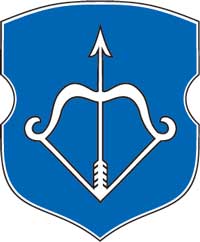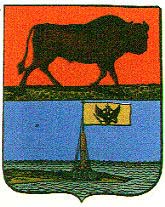| This shield was used from
the 16th Century until the city came under Russian rule in the
19th Century. During Russian rule the original shield was
replaced with the bison shield to the right. This symbol has now been restored to use and now can be seen in numerous places in modern Brest. |
The bison (zubr) was a once very numerous animal in the
region. Bierascie, as
Brest was known, was an important border city for Russia; this is recognized by Russian eagle flag on the lower port of this Russian-era shield. |



